No fire, just water: New pet cremation service is first to use aquamation in Singapore
The Green Mortician's founders hope for Singaporeans to eventually have the option of aquamation, which has been touted as an eco-friendly alternative to cremation.
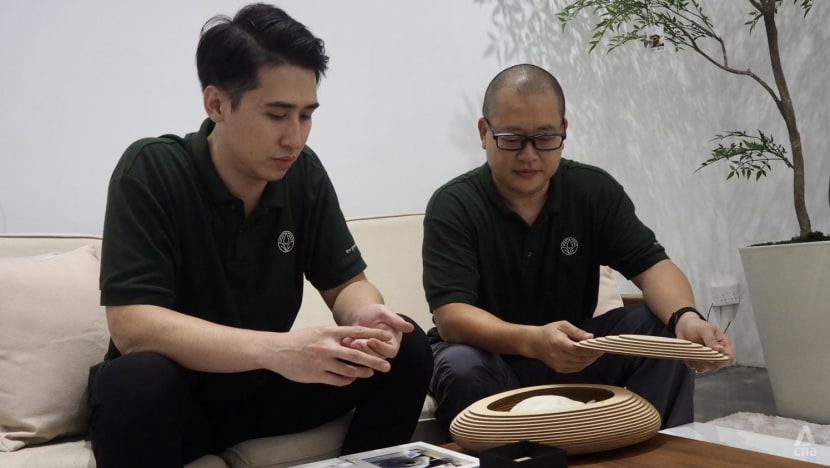
Mr Yang Loo (left) and Mr Joe Kam, founders of The Green Mortician, showing an urn with the "ashes" of a dog after aquamation. (Photo: CNA/Louisa Tang)
SINGAPORE: What if your fur kid – or even yourself – could be cremated not by fire, but by water?
This was a question Mr Yang Loo posed to those around him a few years ago. As a dog owner and animal lover, he knew how hard it was to lose a pet, and wanted to give the “depressing” funeral process a more modern and greener approach.
When a friend told him about aquamation — using water rather than fire — he decided to be the first to bring it to Singapore. With pet ownership in Singapore on a steady increase in recent years, the opportunity was there for the taking.
It took Mr Loo and his business partners three years to secure a space at Toh Guan Centre in the Jurong East area and get the relevant permits from the authorities.
Last month, The Green Mortician officially opened its doors to customers. It has cremated more than 20 pets so far, ranging from dogs and cats to smaller creatures like birds and hamsters.
It remains the only pet cremation service in Singapore to offer aquamation, and the only one located in an industrial building rather than traditional farmlands in areas like Sungei Tengah or Seletar.
Mr Loo, 28, and one of his business partners, Mr Joe Kam, spoke to CNA in early April about the challenges in setting up their business, how they use aquamation, and their hopes to eventually use the technology to cremate human bodies.
CNA also took a look at what happened when aquamation was used on their client’s 11-year-old poodle.


The idea of aquamation first came to Mr Loo in 2018. He had previously worked as a freelance deejay and was in the marketing industry, before becoming a headhunter for renewable energy companies in the Asia-Pacific region.
“I always had an interest in renewables … I was always also keen on (going into) the funeral industry because I didn’t like the way they did it, and I felt there could be a better way,” Mr Loo said.
“If you go to Mandai Crematorium, everything is very serious. Even the tone of wood they use … it’s very depressing, that kind of feeling. So we wanted something that elevates your spirits or at least gives you that neutral ground, and then you can grieve in a way you want to,” he added.
A friend in the funeral industry then told him about aquamation, which is scientifically known as alkaline hydrolysis.
WHAT IS AQUAMATION?
The technology has been widely available in the US for several years for pets. It was first developed decades ago as a way to discard animal carcasses used in experiments.
Several countries and US states have also legalised it for human remains. In 2021, the body of South African bishop Desmond Tutu, a revered anti-apartheid leader, underwent aquamation after he died.
Mr Loo said aquamation has not been used in Singapore because people are used to fire in cremation, and it is cheaper to run a flame-based cremation business. Some religions may also be resistant to aquamation.
The equipment costs a pretty penny as well – about US$200,000, to be precise.

Aquamation, which is also called aqua or water cremation, uses heated water and alkaline chemicals commonly found in cosmetics or soaps to "reduce" or dissolve a body that has been placed in a stainless steel vessel.
The bones left behind are then put through a machine to be ground into fine dust or “ashes”, which are then handed over in an urn to the pet owners.
The process of aquamation mimics the natural decomposition process of a body exposed to soil, but takes about 20 to 24 hours to complete rather than months or decades.
It has also been touted as an eco-friendly alternative to cremation. Advocates say aquamation uses 90 per cent less energy and, unlike cremation, does not release harmful greenhouse gas emissions.
One cycle of aquamation uses about 800 litres of water – roughly the same amount used by a household of five daily, said Mr Loo.
However, sustainable benefits aside, it takes longer to put an animal carcass through aquamation compared with cremation, which takes two to three hours.
It is also more expensive due to the technology used as well as the treatment and disposal of effluent, or the leftover liquid after aquamation.
Mr Loo hopes that in time, this can be reused as liquid fertiliser for plant nurseries, further strengthening the company’s green ethos.
Depending on the size of the pet, The Green Mortician charges S$577 to S$977 (US$430 to US$730) for a full-service package that includes picking up the pet carcass, a memorial service, aquamation and returning the ashes in an urn to the owners.
This is comparable to similar services offered by traditional pet cremation businesses, which also offer cheaper packages for more basic services.

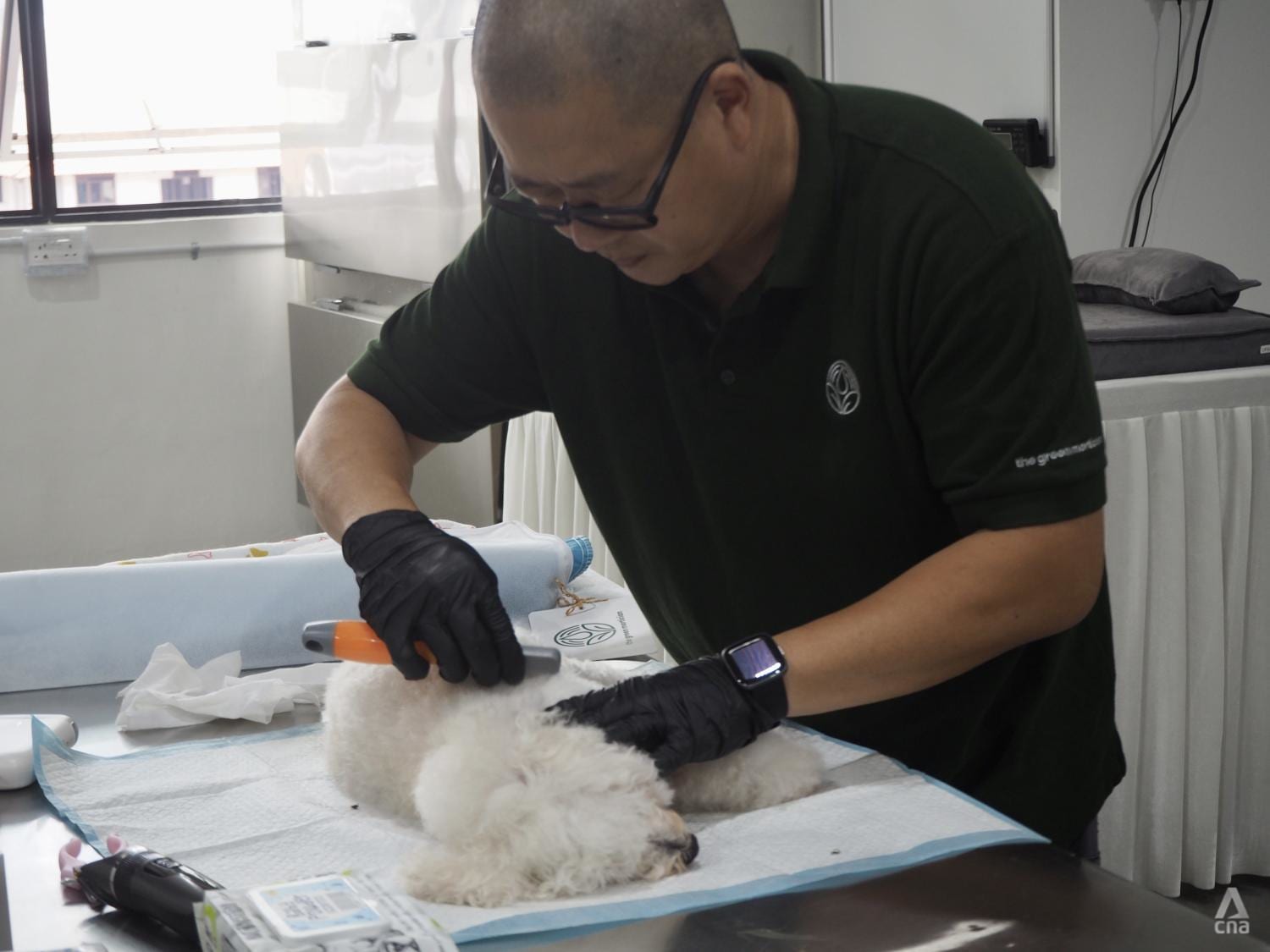
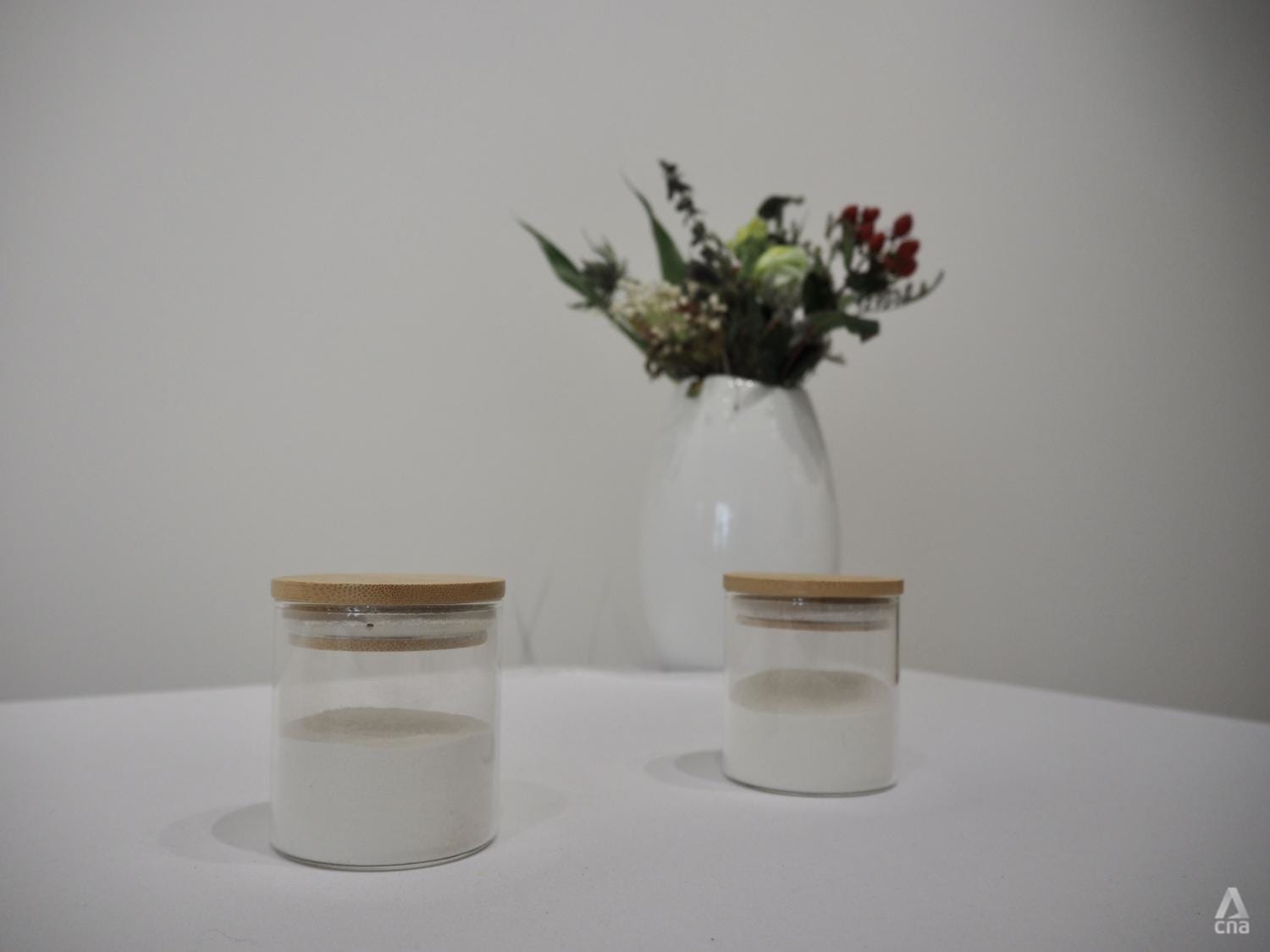
HOW THE BUSINESS CAME ABOUT
In the initial stages of planning, Mr Loo ran into multiple hurdles.
His business was initially – and still is – classified as flame-based cremation, which meant he could open shop in limited areas. It took years for him and his partners to secure their current space and permits from the Urban Redevelopment Authority and National Environment Agency, among other agencies.
The company was also not allowed to operate a cremation business in an industrial building before they shared more research and statistics with the authorities.
Mr Loo added: “One thing that hindered my confidence was that in Singapore, everyone is so used to fire and flame-based cremation. It’s been hundreds of years already, and for certain religions like Taoism, fire symbolises something for them.”
Despite all this, he pressed on in hopes of bringing a new sustainable “death tech” to Singapore. He also conducted mini surveys among his peers to find out if they had heard of aquamation and whether they would choose it.
To his surprise, he realised that most were open to the idea.
He then set out to target younger clients but has since also attracted older ones, like a dog owner who said she “didn’t like the idea of fire”.
“Some people believe when you pass on, you can still feel your nerves, your soul. So when you get cremated at that kind of temperature, you can feel it,” Mr Loo elaborated.
“(Aquamation is) very sustainable but actually, people come to us more for that perception of fire being painful, and they cannot bear to see their fur kid going in.”
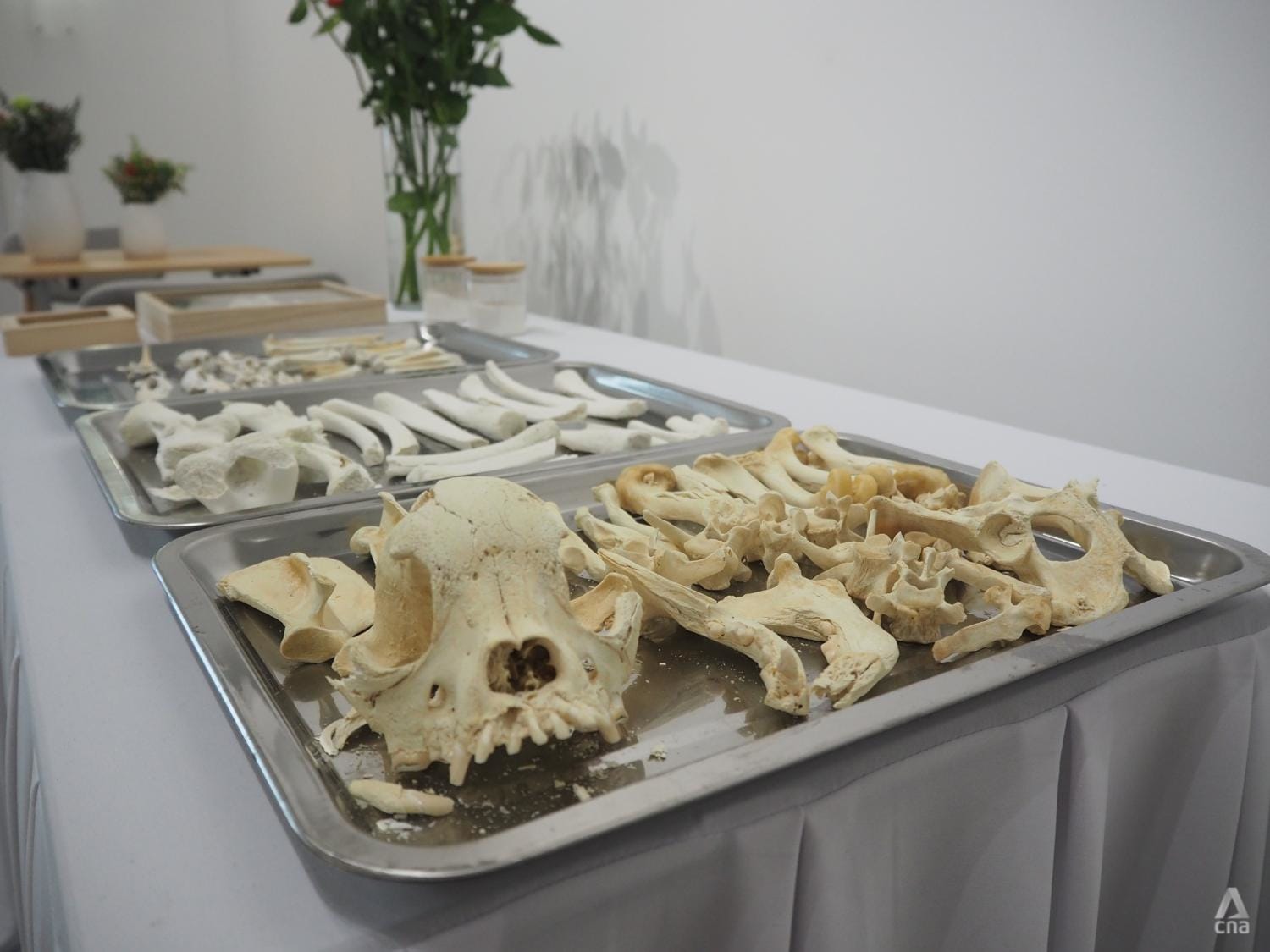
Mr Loo incorporated The Green Mortician as a business in 2019 before roping in his business partners.
One of them was Mr Kam, 47, a former executive of the Animal Concerns Research and Education Society (ACRES) who also had plans to use aquamation for pet cremation. He joined the company after Mr Loo approached him last year.
Mr Kam currently helps out with operations, such as picking up pet carcasses and cleaning them before aquamation.
He told CNA that another challenge was persuading landlords to allow them to set up the business in their building. "Many of them think it's pantang (a Malay term meaning taboo)," he added.
The emotional aspect of the job also tends to hit hard. One of the first animals The Green Mortician handled was a community cat that Mr Kam's close friend took care of. It died after being struck by a car.
Mr Kam said: "We are dealing with not only pets of strangers, but we are also dealing with pets of our own friends or family. The passing of a pet alone actually affects us a lot, especially when we see how much the family is affected.
"But when we focus on helping the animal, helping the family, allowing them to grieve in their own way ... that will take our focus away from the emotional impact."
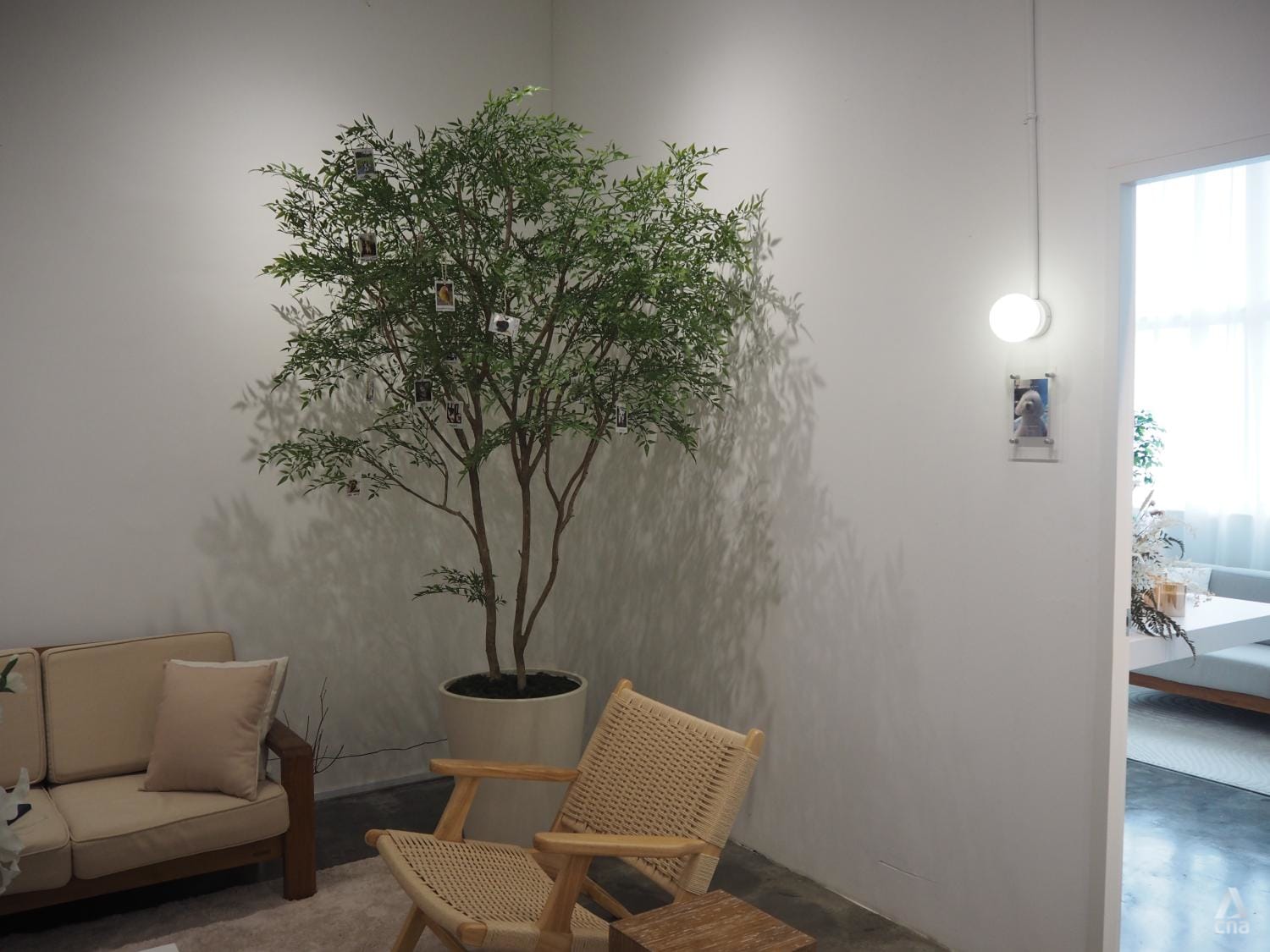
As for attracting customers, Mr Loo said they have so far been a mix of friends, those who heard about the company through word-of-mouth, and people who found it through a Google search.
Due to the novelty of aquamation technology, the company is currently on a three-year approval period. The authorities will then review what it has done before determining if it can continue operating, said Mr Loo.
He harbours hopes of using aquamation on human bodies in future. The authorities have asked the company for information and data, which Mr Loo interprets as their assessment of whether aquamation can eventually be used for humans.
Nevertheless, he pointed out that only a few operators are allowed to perform human cremation here, including Mandai Crematorium.
“Of course, we had to start off with pets as a stepping stone … I would say that what we did here has paved the way for (aquamation) for humans,” he added.
“I’m pretty sure, especially in Singapore where land is scarce, there is a possibility of that happening.”















